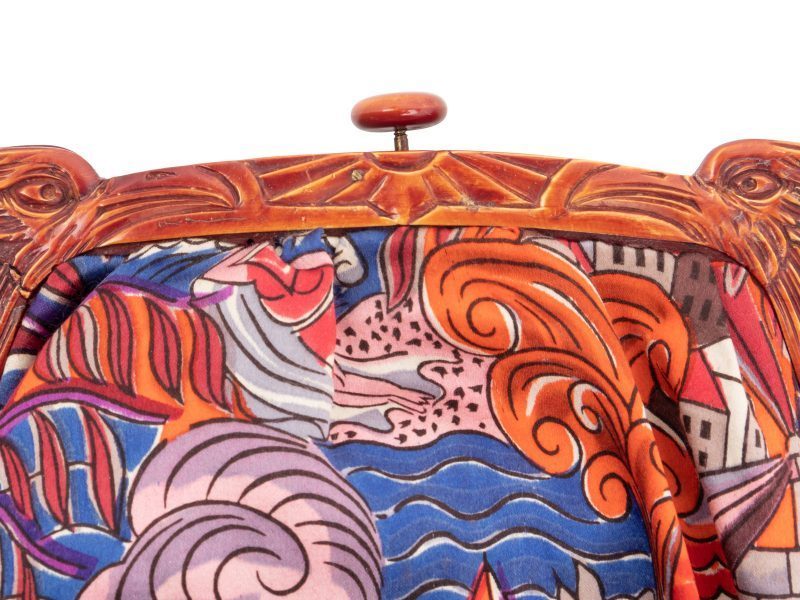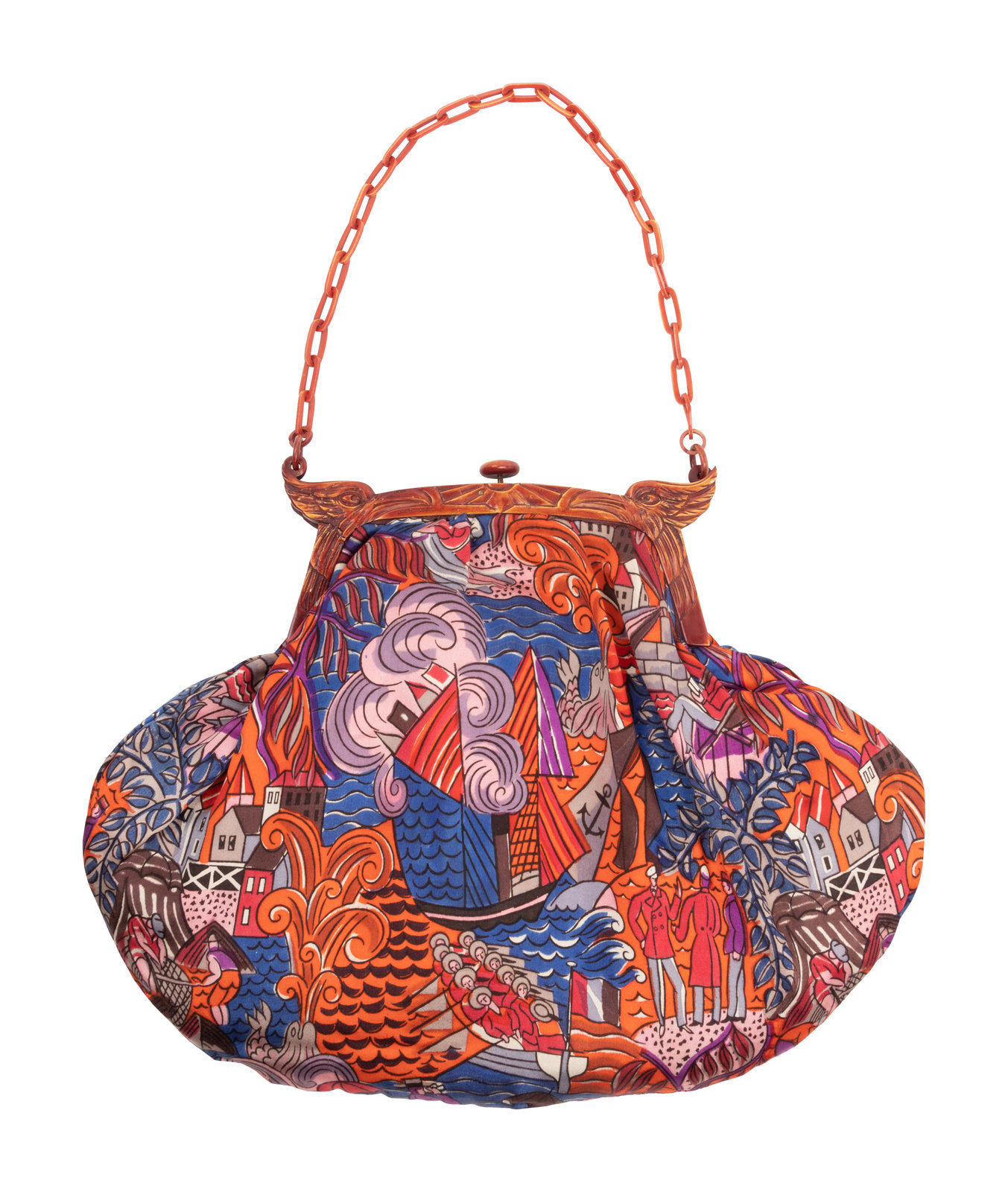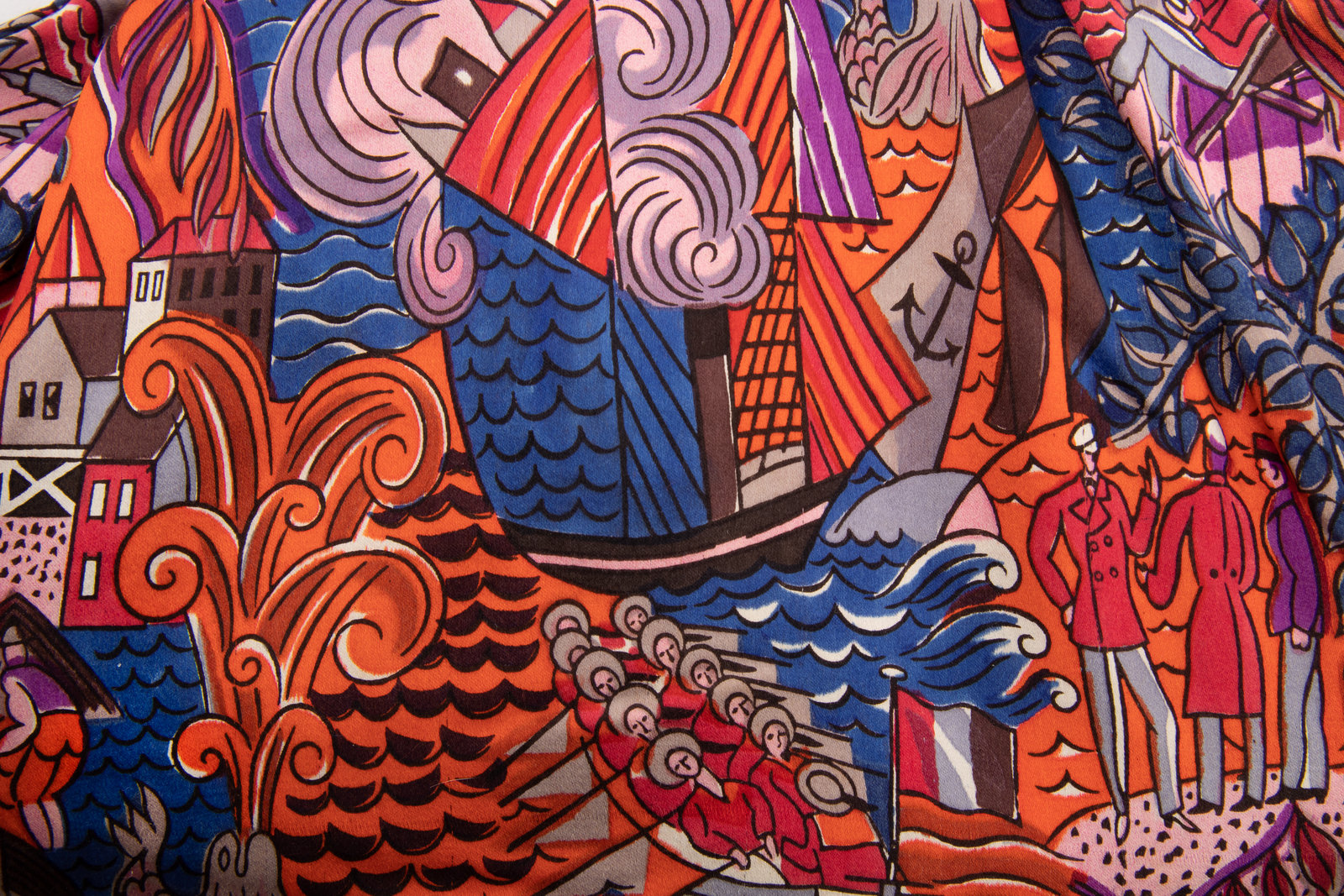
Raoul Dufy, Painter of Light and Silk
Born in Le Havre, France in 1877, Raoul Dufy made his career imbuing his Fauvist tendencies into painting, textiles, and decorative arts. His artistic practice was characterized by sanguine colors and graphic patterns, inspired by and developed through a series of relationships with influential makers of the twentieth century. It was a 1905 encounter with Henri Matisse’s Luxe, Calme et Volupté that sparked Dufy’s experimentations in color and line, which gave to his work a dreamlike quality for which he became known. Initially reproached by his contemporaries, Dufy’s work was dismissed as merely decorative and apolitical. However, it was precisely this joyful insouciance and mastery of diverse media that enabled his success in the decorative arts.
Dufy’s colorful, immersive painting style translated well into printmaking, and earned him ongoing commissions by Paul Poiret beginning in 1910. The couturier believed in the unity of art and fashion, and became a patron and collaborator of Dufy’s, a relationship which would have a profound impact on the artist. Together they would open La petite usine, a woodblock printing factory in Paris where Dufy began some of his most formative explorations in textile design. He soon entered into a contract with textile manufacturer Bianchini-Férier in 1912, and continued to work with the firm for two decades. Through these collaborations, he developed his technical skills in woodblock printing and textile dyeing, and came to appreciate the possibilities of textiles. Thanks to Poiret and Bianchini-Férier, Dufy said, he found a practical application for his “axiom” of light and color, and that on silk, they could achieve melodic harmony.[1]

Lot 35, Raoul Dufy “Deauville” Silk Fabric Bag, 1925
Lot 35 in Hindman’s Luxe Holiday sale features a handbag of printed silk by Dufy for Bianchini-Férier. Dated 1925, it depicts an abstracted scene of Deauville, a cosmopolitan resort town on the Norman coast. In vivid blues, orange and red, figures participate in maritime activities, surrounded by waves, quaint buildings, and sea creatures. The flattened plane abstracts the scene and gives it a fantastical air. Its clasp, likely bakelite, is decorated with Egyptianesque imagery, including symmetrical falcon-like creatures, perhaps representing Horus. The bag’s allusion to ancient Egypt was fashionable at this moment: created just two years after the discovery of Tutankhamun’s tomb, there was an appetite in popular culture for Egyptian antiquity.

Lot 35, Raoul Dufy “Deauville” Silk Fabric Bag, 1925
Dufy designed this textile while travelling frequently around the Mediterranean, a joyful period amid the world’s unsettled conditions. Following the destruction of World War I, his work brought a welcome levity to visual culture. He rejected the rigidities of Art Deco and enlivened his work through vivid color and exotic locales. In this bag, the allure of escapism and vivid color are joined with the solidity of antiquity in playful juxtaposition.
The
reasons for which Dufy was criticized were precisely his strength, resulting in
a decorative vision perfectly suited to fashion. Over the following decades, Dufy
would earn his appreciation; his work was later described in Vogue,
“celebrating freedom, caprice, love, joy, Dufy flatters our capacity to savor
the sweet life — a flattery somewhat resistible in painting, perhaps; but
stitch it into silk and ‘goodbye, melancholy.’”[2]
[1] Dufy, Raoul, La Passion des Tissus (Paris: Klincksieck, 1993)
[2] Schjeldahl, Peter, “The Illicit Joy of Dufy,” Vogue (New York, Nov. 1984), p. 454-457.